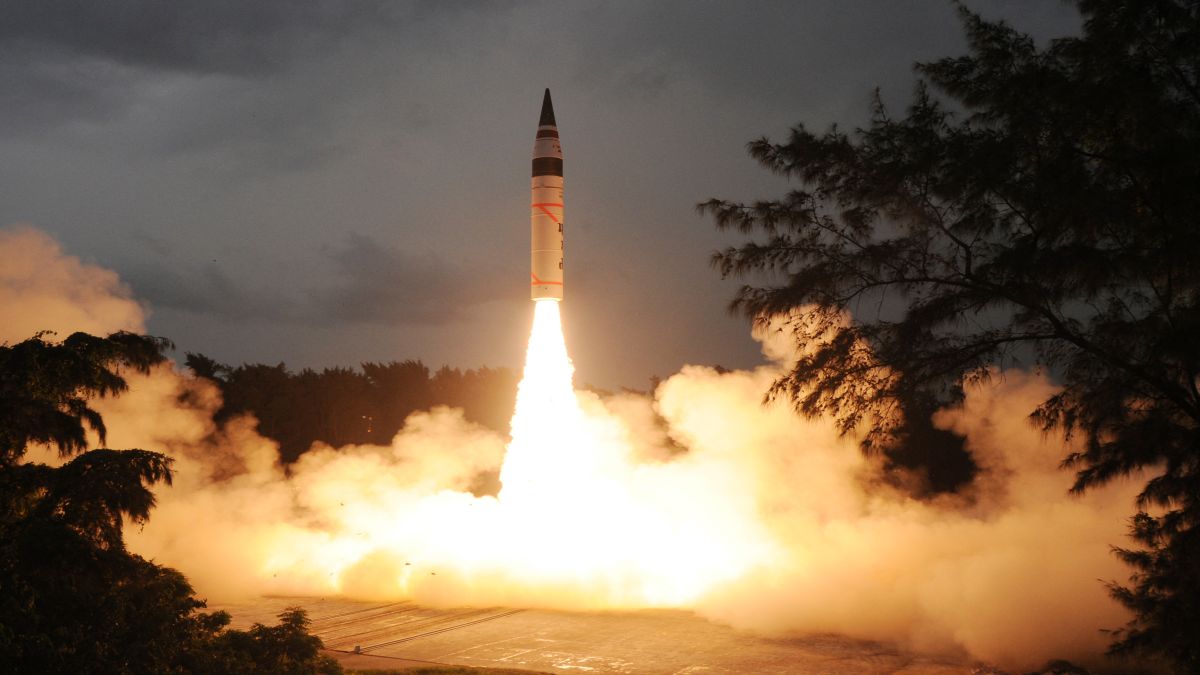Is India looking to build its own bunker buster missile?
After the US deployed its massive bunker busters in the strikes on Iran’s nuclear facilities, there are reports that India is planning to develop its own such weapon.
This weapon will help India destroy an enemy nation’s targets underground.
However, there is an unique twist – India is looking to do so by modifying its Agni-V missile.
The US had used its GBU-57A/B Massive Ordnance Penetrator, designed by Boeing and manufactured by the US Air Force, in the attack on the Fordow nuclear facility in Iran.
But what do we know about the weapon India is looking to develop?
Let’s take a closer look:
What do we know?
The weapon will be an altered version of the Agni-V intercontinental ballistic missile – which is India’s top missile and the cornerstone of its arsenal.
It is being developed by the Defence Research and Development Organisation (DRDO).
While the Agni-V has a range of 5,000 kilometres, this modified weapon will have a range of 2,500 kilometres.
Though the Agni-V carries nuclear missiles, this bunker buster will be a conventional weapon.
It will fly between speeds of Mach 8 and Mach 20 – making it a hypersonic missile.
It will be able to carry a 7,500-kilo warhead.
The idea behind the weapon is to hit missile silos and infrastructure that is deep beneath the earth – which will be made possible as the Agni-V missile itself is accurate within a range of 10 metres.
The warhead will be able to penetrate between 80 to 100 metres underground before detonating.
Like the GBU-57A/B Massive Ordnance Penetrator (which uses Global Positioning System/Inertial Navigation System to find and lock on to its targets), this weapon too will rely on precision guidance and advanced navigation systems.
The DRDO is also examining an airburst variant that allows it to take out targets above the ground.
The warhead could weigh as much as 8 tonnes – more than three times what the warhead of the its GBU-57A/B Massive Ordnance Penetrator weighs.
Why is India looking to build such a missile?
India is looking at building its own bunker buster missile because, unlike the United States, it has no B-2s and B-52s to deliver such a payload.
India’s Rafale and Su-30 craft are not equipped to deliver such bunker buster missiles.
The development of this weapon will allow the Indian Air Force to deliver high-impact hits to underground targets from long distances.
During Operation Sindoor, there was chatter on social media that India had hit Kirana Hills in Pakistan – which is reportedly home to a nuclear storage facility.
However, Indian Air Force’s Director General of Air Operations Air Marshal AK Bharti later denied this.
India in the future can look to target underground facilities of its rivals.
Meanwhile, though US President Donald Trump has said that Iran’s nuclear facilities have been ‘totally obliterated ’, top defence chiefs and US officials have expressed scepticism about such claims.
“It was obliterating like nobody’s ever seen before,” Trump claimed in an interview on Sunday. “And that meant the end to their nuclear ambitions, at least for a period of time.”
Trump has insisted from just hours after three key targets were struck by US bunker buster bombs and Tomahawk missiles that Iran’s nuclear program was “obliterated.”
US Defence Secretary Pete Hegseth said they were “destroyed.”
However, a preliminary report from the US Defence Intelligence Agency said that while the strikes did ‘significant damage’ to the Fordo, Natanz and Isfahan sites, they did not totally destroy the facilities.
The US intelligence community thinks that the vast majority of Iran’s amassed enriched uranium likely remains buried under the rubble at Isfahan and Fordo, two of the three key nuclear facilities targeted by US strikes.
With inputs from agencies


)

)
)
)
)
)
)
)
)



